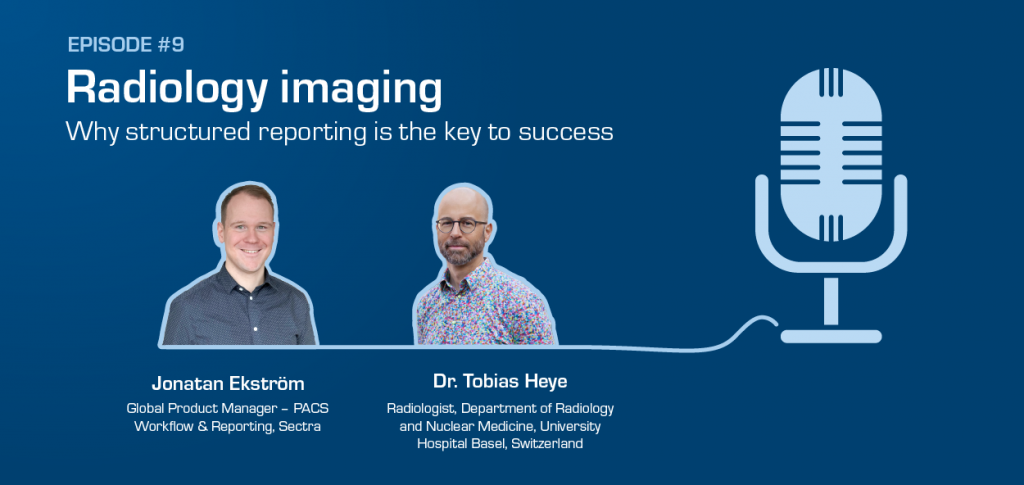How can radiologists achieve work-life balance, which in turn translates to enhanced patient care? In the previous episode, we discussed Stanford’s remote reading program, emphasizing the role of a high-performing PACS and innovative tools in seamlessly connecting radiologists and healthcare professionals, even when miles apart. In this episode, we focus on yet another aspect that can support radiologists in achieving work-life balance and enhancing patient care: structured reporting.
What is the real value of standardizing the data format and utilizing structured fields? Dr. Tobias Heye, Radiologist, Department of Radiology and Nuclear Medicine, University Hospital Basel, Switzerland, together with Jonatan Ekström, Global Product Manager for PACS Workflow & Reporting, Sectra, discuss how radiology reports can be transformed into valuable repositories of information that enable researchers and clinicians to mine insights, discover trends, and make evidence-based decisions. Tune in!

IN THIS EPISODE:
[4:38] Tobias discusses challenges in radiology reporting, mentioning variations in conveying information and the need for standardization.
[7:00] Jonatan reflects on historical radiology reports from 1896 and compares them to modern reports, highlighting the persistence of certain communication challenges.
[16:47] Tobias discusses the advantages of standardized language and structured information for physicians to streamline their workflow.
[18:06] The conversation shifts to the benefits of structured reporting, enabling trend analysis and data tracking. Tobias mentions a published paper correlating pneumonia findings with seasonal trends.
[19:07] Jonatan emphasizes the need to expand the bandwidth of radiology reports to avoid losing critical information in the process.
[20:14] The discussion touches on the challenges of adapting structured reporting.
[26:42] Jonatan introduces the concept of a “data race” in healthcare.
KEY TAKEAWAYS:
- Structured reporting proves beneficial in providing relevant information tailored to the needs of referring physicians.
- Standardized language in reporting builds trust and facilitates information processing for physicians.
- Structured reporting enables data extraction and analysis, revealing insights such as disease trends, workflow improvements, and correlations with other health phenomena like seasonal diseases.
- Structured reporting enhances the workflow of physicians, allowing them to focus more on interpreting images and on the cumbersome task of typing or dictating reports.
- Structured reporting makes it possible to close feedback loops in healthcare, which improves collaboration between various medical specialties.


